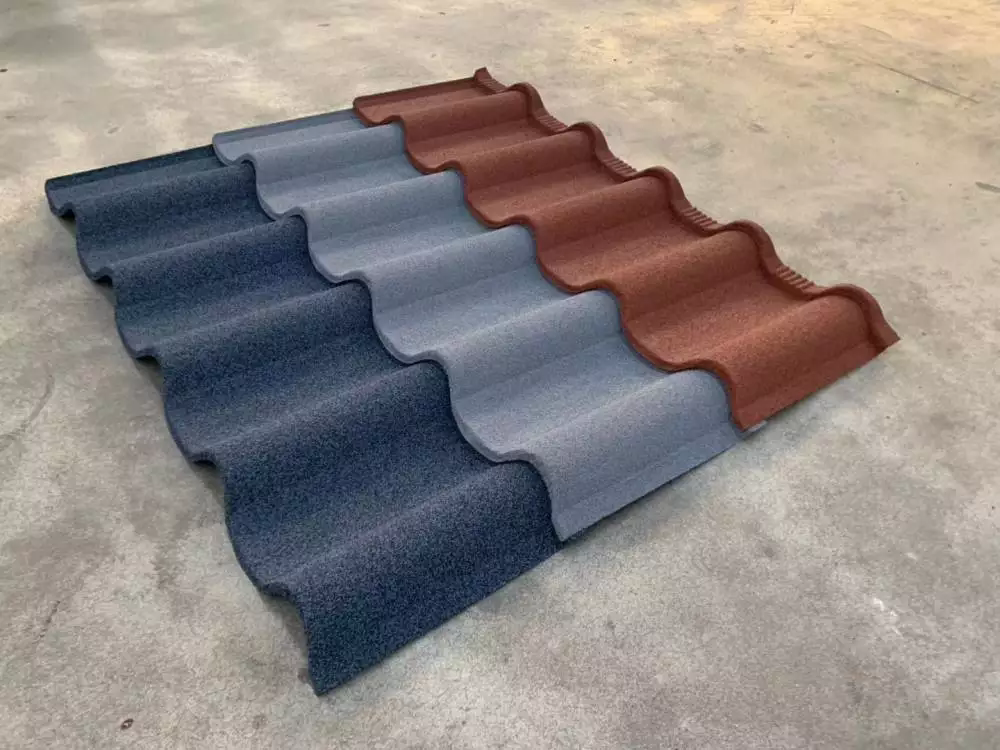When selecting a roofing material, homeowners and builders often face a tough decision between options that balance durability, cost, aesthetics, and practicality. Two popular choices that frequently emerge in this debate are stone coated steel roofing and concrete tile roofing. Each offers distinct advantages and drawbacks, making the choice highly dependent on factors like budget, climate, and design preferences.

Key Differences Between Stone Coated Steel and Concrete Tile Roofing
Let’s break down the comparison across several critical dimensions: durability, weight, aesthetics, cost, installation, energy efficiency, and maintenance.
1. Durability and Lifespan
Both roofing types are built to last, but their performance varies under specific conditions.
- Stone Coated Steel Roofing: Renowned for its resilience, stone coated steel excels in areas with severe weather. It can withstand hailstones up to 3 inches in diameter and boasts a Class A fire rating due to its non-combustible nature. With proper installation, its lifespan ranges from 40 to 70 years, making it a long-term investment.
- Concrete Tile Roofing: Concrete tiles are also durable, often lasting 50 years or more, potentially for the life of the structure. However, they’re more vulnerable to cracking from impact (e.g., hail or falling branches), which can necessitate repairs in storm-prone areas.
Table 1: Durability Comparison
| Feature | Stone Coated Steel | Concrete Tile |
|---|---|---|
| Lifespan | 40-70 years | 50+ years |
| Impact Resistance | High (resists hail) | Moderate (can crack) |
| Fire Resistance | Class A | Class A |
| Wind Resistance | Up to 120 mph | Up to 120 mph |
2. Weight and Structural Requirements
The weight of a roofing material directly impacts the structural demands of a building.
- Stone Coated Steel Roofing: Weighing just 1.5 to 2 pounds per square foot, this lightweight option often allows installation over existing roofs without additional reinforcement, reducing costs and complexity.
- Concrete Tile Roofing: At 8 to 12 pounds per square foot, concrete tiles are significantly heavier. This weight may require enhanced framing or support, particularly in older homes, adding to installation expenses.

Table 2: Weight Comparison
| Material | Weight per Square Foot |
|---|---|
| Stone Coated Steel | 1.5 - 2 lbs |
| Concrete Tile | 8 - 12 lbs |
3. Aesthetic Appeal and Design Options
Aesthetics play a big role in roofing decisions, and both materials offer unique styling possibilities.
- Stone Coated Steel Roofing: Highly versatile, it can replicate shingles, shakes, or tiles, with a broad palette of colors and textures. The stone coating adds a natural, rugged look suitable for modern, rustic, or eclectic designs.
- Concrete Tile Roofing: Favored for its traditional charm, concrete tiles shine in Mediterranean, Spanish, or Italian-style homes. Available in various profiles (flat, low, or high) and colors, they offer a classic, uniform appearance, though with slightly less design flexibility than stone coated steel.
4. Cost Considerations
Budget is a deciding factor, encompassing both upfront and long-term costs.
- Stone Coated Steel Roofing: Initial costs are higher, ranging from $10.50 to $18.50 per square foot, reflecting its premium materials and durability. However, its low maintenance needs can offset this over time.
- Concrete Tile Roofing: More affordable upfront at $7 to $15 per square foot, concrete tiles appeal to cost-conscious buyers. Yet, potential repair costs—especially in harsh climates—may increase expenses down the line.
Table 3: Cost Comparison
| Cost Factor | Stone Coated Steel | Concrete Tile |
|---|---|---|
| Initial Cost | $10.50 - $18.50 / sq ft | $7 - $15 / sq ft |
| Maintenance | Low | Moderate |
| Long-Term Value | High (due to durability) | Moderate (may need repairs) |
5. Installation Process
Ease of installation affects both time and labor costs.
- Stone Coated Steel Roofing: Its lightweight design and interlocking panels make installation quick and straightforward. It can often overlay existing roofs, minimizing disruption.
- Concrete Tile Roofing: Heavier and more labor-intensive, concrete tiles require careful placement and a reinforced roof deck, extending installation time and potentially raising costs.
6. Energy Efficiency
Both materials contribute to energy savings, but in different ways.
- Stone Coated Steel Roofing: Its reflective surface reduces heat absorption, lowering cooling costs in warm climates. The stone coating enhances this effect, making it highly energy-efficient.
- Concrete Tile Roofing: With high thermal mass, concrete tiles absorb heat during the day and release it slowly at night, stabilizing indoor temperatures in regions with fluctuating weather.

7. Maintenance and Repairs
Long-term upkeep is a key consideration for any roof.
- Stone Coated Steel Roofing: Requires minimal maintenance thanks to its rust-resistant coating and durability. Damaged panels can be replaced individually, keeping repair costs low.
- Concrete Tile Roofing: More prone to cracking, it demands regular inspections and occasional repairs. Fading colors and matching replacement tiles can also pose challenges over time.
Real-World Example
Consider a homeowner in Texas, where hailstorms are common. They opted for stone coated steel roofing after a concrete tile roof suffered multiple cracked tiles during a storm, costing $3,000 in repairs. The stone coated steel roof, installed for $15,000, has since endured similar weather with no damage, proving its worth over five years.
Which Should You Choose?
Deciding between stone coated steel roofing and concrete tile roofing hinges on your priorities:
- Opt for Stone Coated Steel Roofing if:
- You need a lightweight, low-maintenance roof.
- You live in an area with hail, wind, or fire risks.
- You value design versatility and long-term durability.
- Choose Concrete Tile Roofing if:
- You’re working with a tighter budget upfront.
- You love the traditional tile aesthetic.
- Your home can support the extra weight.
Both options offer impressive longevity and style, but their differences in cost, weight, and resilience make them better suited to specific scenarios. Weigh your local climate, structural capacity, and aesthetic goals to find the perfect fit for your home.
